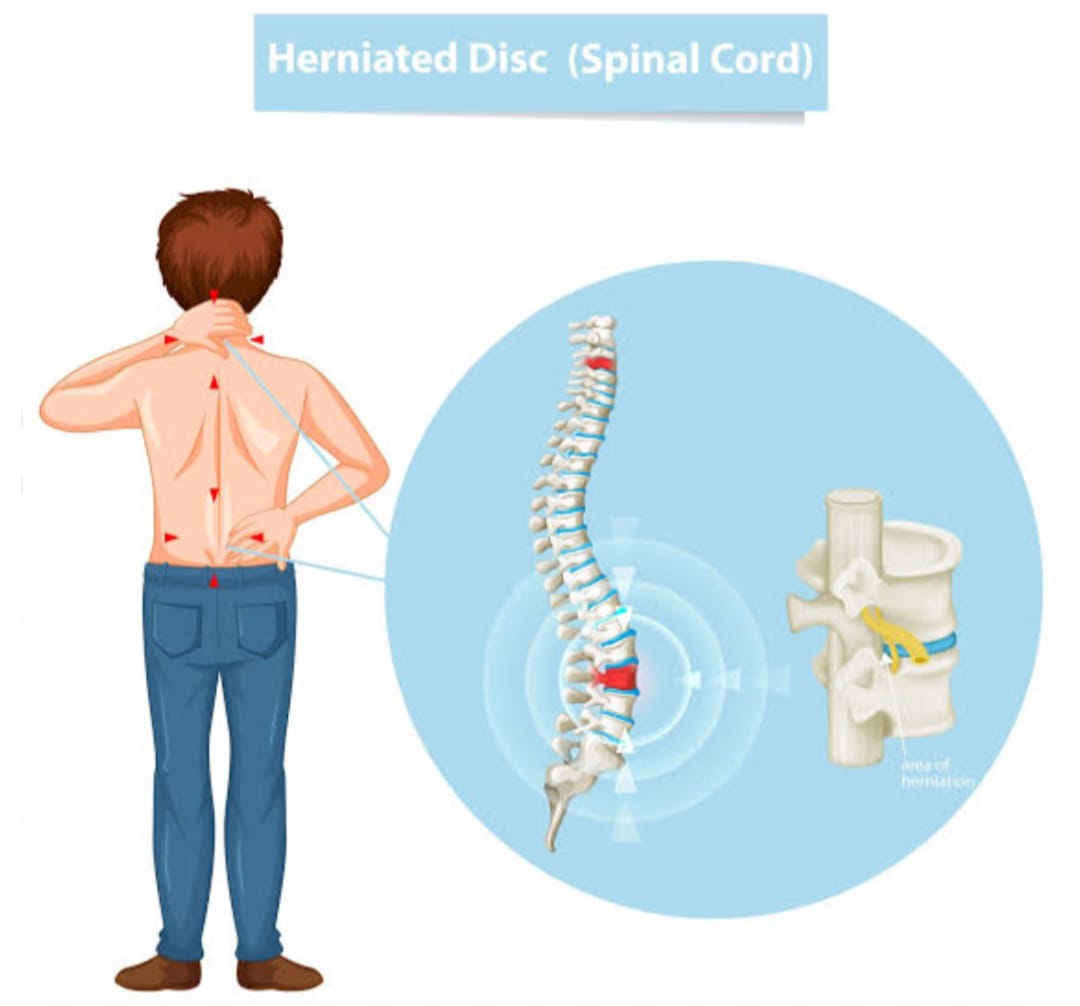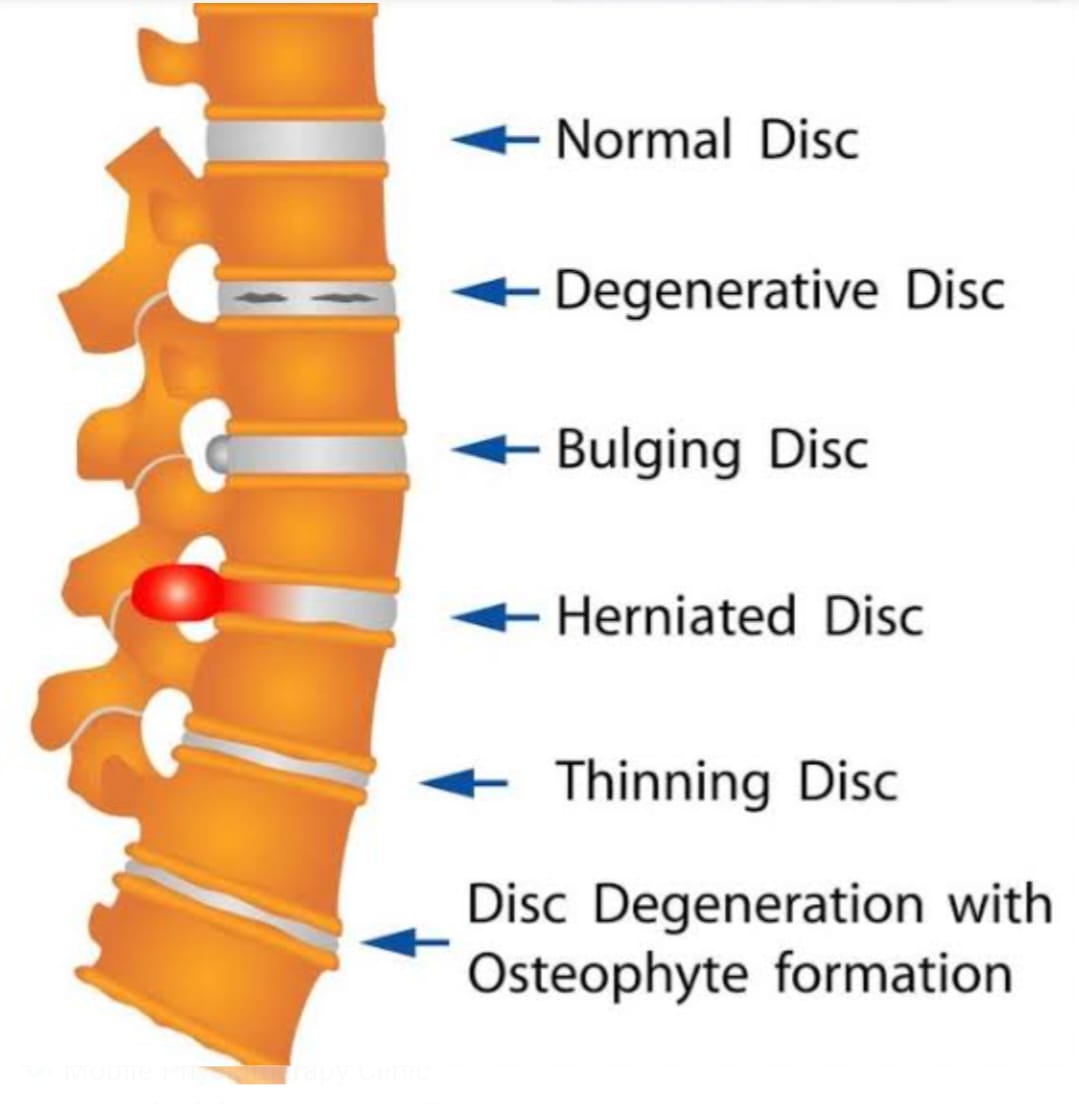Prolapsed inter vertebral disc PIVD
The spine has special cushioning between each vertebra, and these are called discs. Discs have a soft center called the nucleus pulpous, and then a harder outer ring.
When you have a prolapsed disc (commonly called a "slipped disc"), a disc does not actually "slip". What happens is that part of the inner softer part of the disc (the nucleus pulpous) bulges out (herniates) through a weakness in the outer part of the disc. A prolapsed disc is sometimes called a herniated disc. The bulging disc may press on nearby structures such as a nerve coming from the spinal cord. Some inflammation also develops around the prolapsed part of the disc.
Any disc in the spine can prolapse. However, most prolapsed discs occur in the lumbar part of the spine (lower back). The size of the prolapse can vary. As a rule, the larger the prolapse, the more severe the symptoms are likely to be.
It is not clear why some people develop a prolapsed disc and not others, even when they do the same job or lift the same sort of objects. It seems that some people may have a weakness in the outer part of the affected disc. Various things may trigger the inner softer part of the disc to prolapse out through the weakened outer part of the disc. For example, sneezing, awkward bending, or heavy lifting in an awkward position may cause some extra pressure on the disc. In people with a weakness in a disc this may be sufficient to cause a prolapsed.
Symptoms: -
- Back pain is often severe, and usually comes on suddenly.
- Other symptoms may include sensory changes such as numbness, tingling, muscular weakness, paralysis, paresthesia, and affection of reflexes.
- Nerve root pain (usually "sciatica")
- Cauda equina syndrome - rare, but an emergency
Treatment: -
- Operative procedures available are very costly and risky. They may cause paralysis of the affected body parts.
- Surgery can be avoided if homoeopathic medicine taken in time. Good results can be achieved with homeopathic medicine so pressure on nerves is relieved thereby relieving pain. In addition, homeopathic medicine acts on intervertebral ligaments as it stabilize spine also.
- On average, the repair begins within few days of treatment and symptoms improve within 7-15 days. The repair completes by 2-3 months. It gives permanent cure. Success rate is above 95%.
- Medicines have no side effects.



